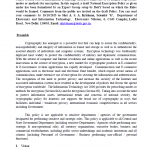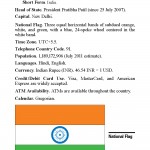
Cryptography has emerged as a powerful tool that can help to assure the confidentiality, non-repudiability and integrity of information in transit and storage as well as to authenticate the asserted identity of individuals and computer systems. Encryption technology was traditionally deployed most widely to protect the confidentiality of military and diplomatic communication. With the advent of computer and Internet revolution and online applications as well as the recent innovations in the science of encryption, a new market for cryptographic products in E-commerce & E-Governance civilian applications has rapidly developed. Communication and E-commerce applications such as electronic mail and electronic fund transfer, which require secure means of communication, make extensive use of encryption for securing the information and authentication.


